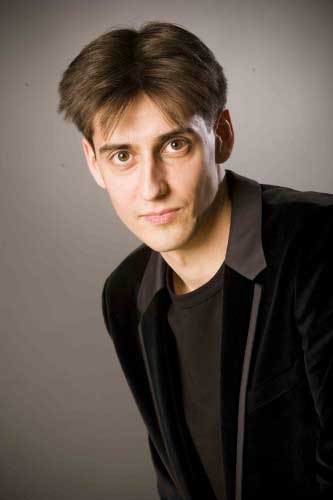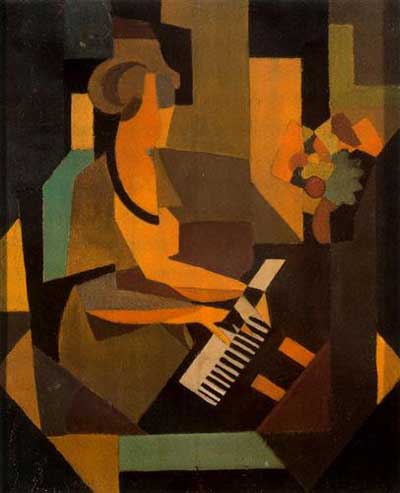Concert
The Boston Conservatory Piano Masters Series
Boston Conservatory, Boston, MA
April 7, 2015
Yevgeny Sudbin, Piano
Sonata in B Minor, Hob. XVI:32
Ludwig van Beethoven
Six Bagatelles, op. 126
Frederic Chopin
Ballade No. 3 in A-flat Major, op. 47
Sergey Rachmaninov
Prelude No. 12 in g-sharp Minor, Op. 32
Preulude No. 5 in G Major, Op. 32
Prelude No. 5 in G Minor, Op. 23
Alexander Scriabin
Mazurka No. 3 in E Minor, Op. 25
Camille Saint-Saens (Arr. Sudbin)
Danse Macabre (arranged based on the version of Liszt and Horowitz)

Photo: Mark Harrison
Courtesy of www.yevgenysudbin.com
Sudbin is a no-nonsense pianist, who comes out, bows politely, then sits down and does his thing straight away. He does not pause excessively at the keyboard, but digs right in. The results, particularly in his interpretations of Chopin, Rachmaninoff and Scriabin, were vividly appealing.
He began with a Haydn sonata, notable in the outset for the dramatic punctuation he gave it, attacking the significant phrases with a strong edge, interesting, but perhaps a touch too much for Haydn. Breaking into the second movement a bit suddenly, the line came into its own in the heavy, ruminating secondary theme. Fluid runs began the third movement, again with transitions that sometimes seemed a bit too sudden. Though the punctuations were interesting, the playing seemed a bit on the heavy side for Haydn, though the ending, with two subtly understated chords, was pulled off elegantly.
The Beethoven Bagatelles were best in their fervent passages, with elevated treble passages also pulled off beautifully. Sudbin played at points with an element of ferocity that yielded a sense of Sturm und Drang, again a bit thick, even for Beethoven. Throughout, however, Sudbin’s capacity for playfulness in the treble range gave a sense of lightness that eventually transitioned to a smooth lyricism. A tempestuousness in the final section led to a quaint pastoral, with, again, a robustly fervent end.

“Georgette at the Piano” (1923)
With Chopin, Sudbin seemed to really come into his own, his punctuational style constantly giving interesting shapes to the romantically impressionistic landscape of sound, his style of playing working particularly well here. He showed he’s got the heart of a romantic while maintaining the dexterous spirit of a sculptor, a combination that led convincingly to an energetic climax.
With the Rachmaninoff and Scriabin, Sudbin truly showed his lyrical and technical capacities, seeming totally at home in the textural idioms of these works.
A combination, in the Rachmaninoff, of light treble rain accompanied by ruminating themes below offered the melding of these traits Sudbin so well conveyed. The final section started with an almost Hispanic romp, followed by one of those great, expansive desert themes for which Rachmaninoff is so well known. Subbin pulled it off with panache, clearly a natural in this context.
In the Scriabin, Sudbin not only played, but painted a kind of impressionistic mural in swaths of sound. The lovely plaintive themes merged into fascinating layers of harmony, exhibiting a wandering lyricism throughout. With some chirpings that one more associates with Messaien, the Scriabin was full of suggestive coloration, and Sudbin did a marvelous job of bringing to life this musical mural full of guttural reverberation and tonal impressions.
Sudbin’s own recasting of the Saint-Saens Danse Macabre was a dramatic showpiece, but musically less effective. It gave the virtuoso an opportunity to demonstrate his skills, but the thematic variations seemed directed almost totally to that end.
An unannounced encore – a knowledgeable concertgoer next to me suggested it was either a Scriabin prelude or something by Medtner – again had the wonderful compelling lyricism that Sudbin had just demonstrated so convincingly in his readings of Chopin, Rachmaninoff and Scriabin.
The concert represents the last in a series of six devoted to “Piano Masters” scheduled this year at the Boston Conservatory, at least one of which, alas, had to be canceled due to the blizzards of February and March.
– BADMan
Leave a Reply